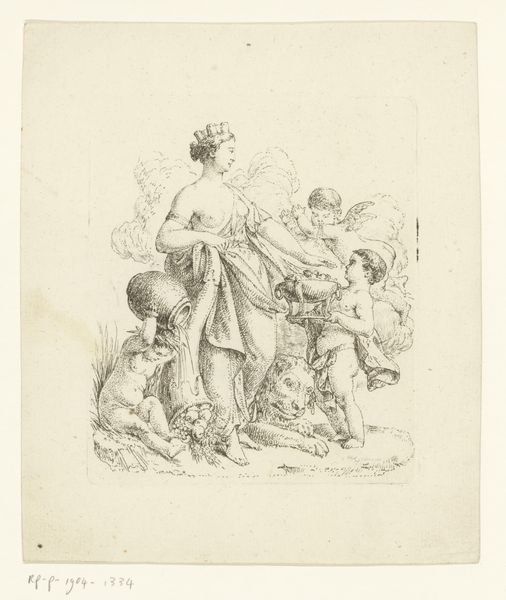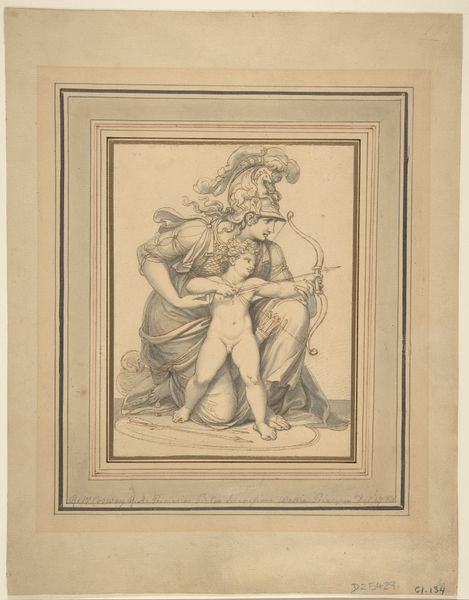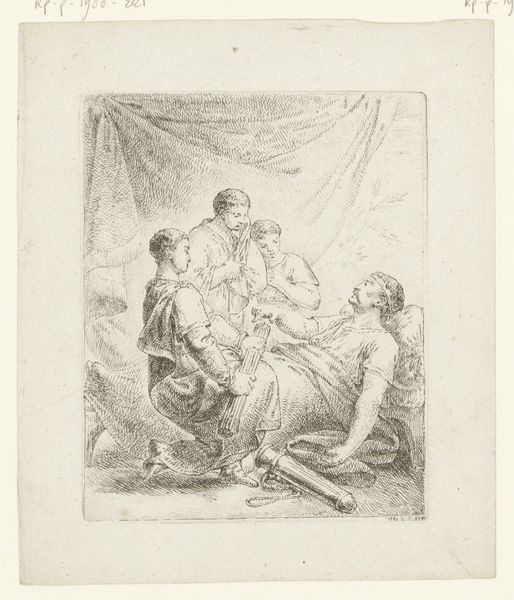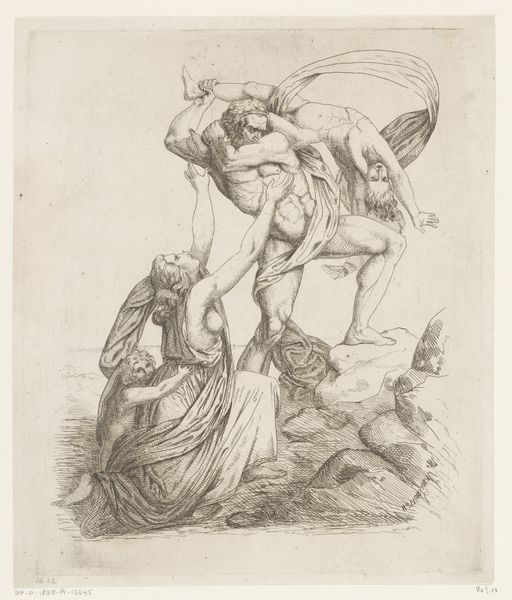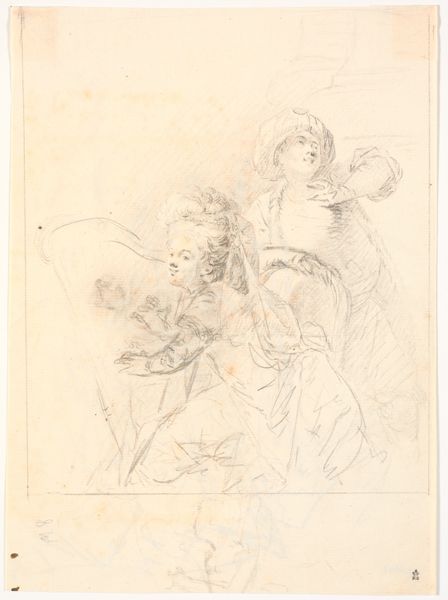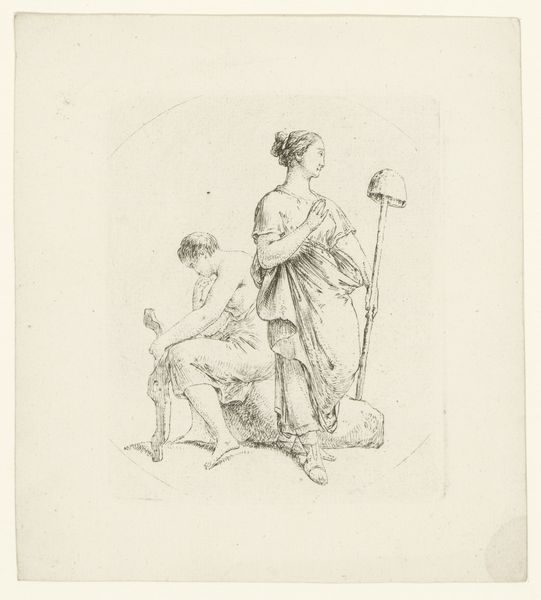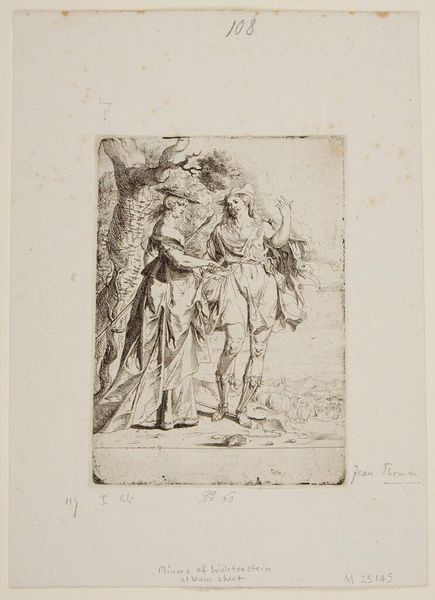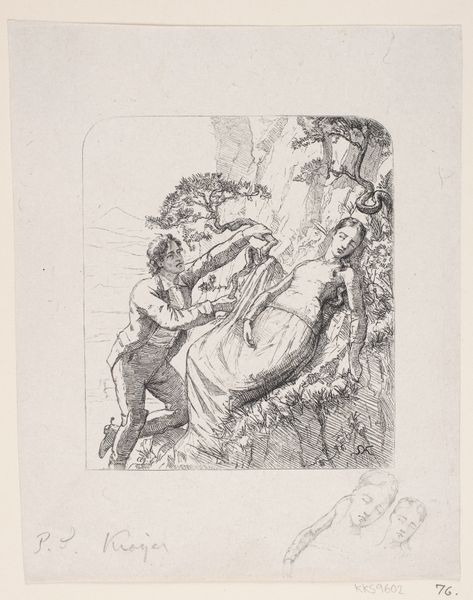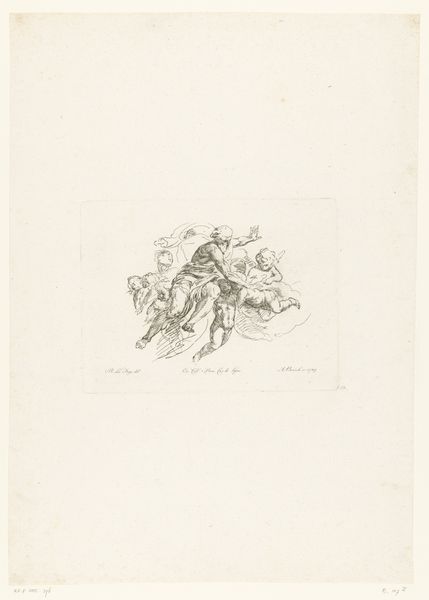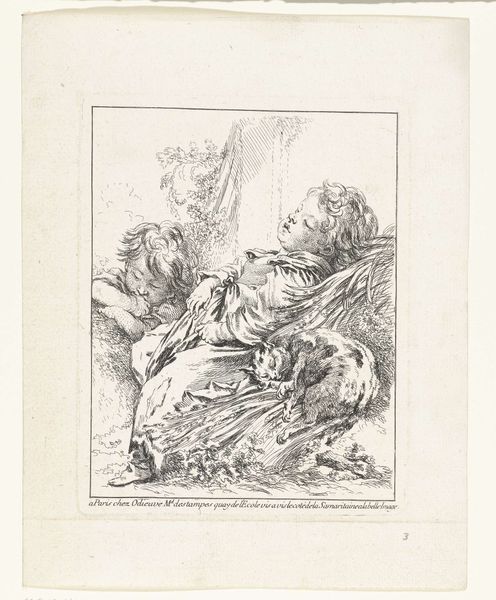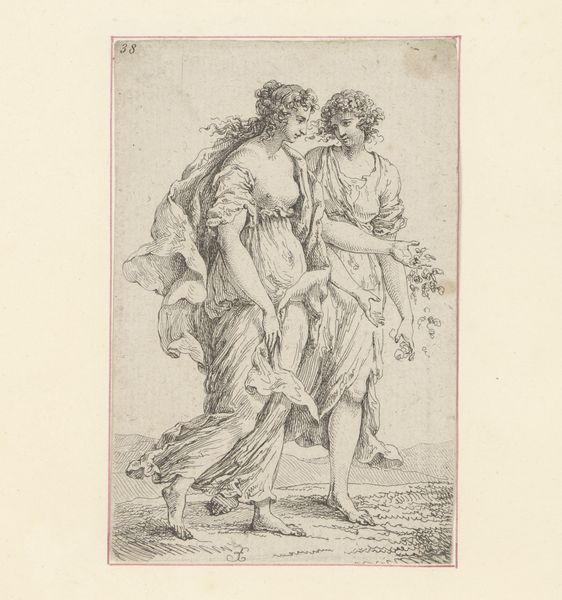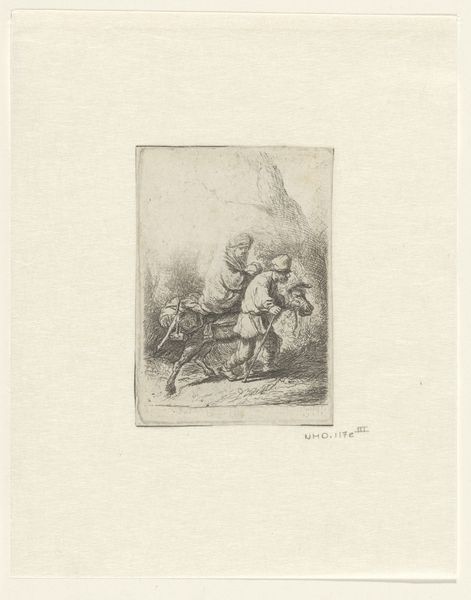
drawing, engraving
#
drawing
#
neoclacissism
#
light pencil work
#
ink drawing
#
allegory
#
pen sketch
#
pencil sketch
#
figuration
#
personal sketchbook
#
ink drawing experimentation
#
pen-ink sketch
#
sketchbook drawing
#
pencil work
#
nude
#
sketchbook art
#
engraving
Dimensions: height 136 mm, width 110 mm
Copyright: Rijks Museum: Open Domain
Christian Bernhard Rode made this etching, Allegory of Happiness, sometime in the 1700s. The essence of etching lies in its controlled use of acid to bite into a metal plate, leaving behind an image that can be printed. Here, Rode would have coated a copper plate with a waxy, acid-resistant ground, then used a needle to scratch away lines, exposing the metal underneath. Immersing the plate in acid would have etched those lines, creating grooves to hold ink. The result is this print with an image of two figures. The material properties of the copper allow for fine detail, as you can see in the delicate rendering of the figures. But the real magic is in the process, an indirect, alchemical interaction with chemicals, a craft. The etching process can be repeated to make multiple impressions, democratizing the image. It turns fine art into a commodity, reflecting the emerging print culture of the 18th century. The value is not just in the image, but in the labor and skill required to produce it.
Comments
No comments
Be the first to comment and join the conversation on the ultimate creative platform.
